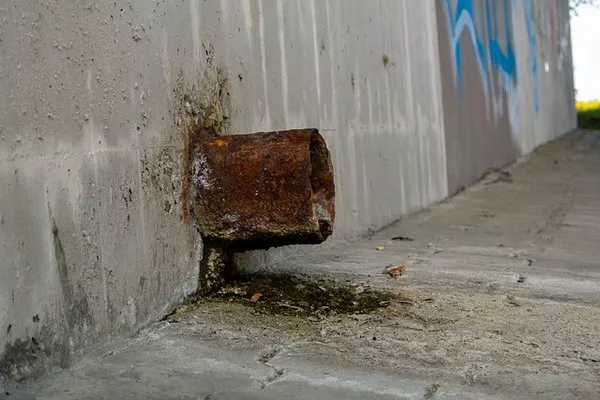Wastewater treatment is a critical process that ensures the safety and cleanliness of water released back into the environment. The complexity of modern wastewater treatment systems involves a combination of physical, biological, and chemical processes designed to remove contaminants and pollutants. Among these, the role of chemical agents is pivotal. This article delves into the various chemicals used in wastewater treatment, their functions, and their significance in maintaining water quality.
1. Coagulants
Aluminum Sulfate (Alum)
Aluminum sulfate, commonly known as alum, is one of the most widely used coagulants in wastewater treatment. It works by neutralizing the negative charges on particles, allowing them to clump together into larger aggregates known as flocs. These flocs can then be easily removed by sedimentation or filtration. Alum is effective in removing suspended solids, organic matter, and phosphates from wastewater.
Ferric Chloride and Ferric Sulfate
Ferric chloride and ferric sulfate are also extensively used coagulants. They function similarly to alum by neutralizing charges on particles, promoting flocculation, and aiding in the removal of suspended solids. These iron-based coagulants are particularly effective in removing heavy metals and phosphates, making them ideal for industrial wastewater treatment.
2. Flocculants
Polyacrylamides (PAMs)
Polyacrylamides are synthetic polymers used as flocculants to enhance the aggregation of particles. They are often used in conjunction with coagulants to improve the efficiency of the flocculation process. PAMs can be tailored to various wastewater treatment needs by adjusting their molecular weight and charge density. They are effective in treating both industrial and municipal wastewater.
Natural Polymers
Natural polymers such as starch, chitosan, and cellulose derivatives are gaining popularity as eco-friendly alternatives to synthetic flocculants. These biodegradable materials offer similar benefits in terms of flocculation efficiency but with a reduced environmental impact.
3. Disinfectants
Chlorine
Chlorine is one of the most common disinfectants used in wastewater treatment. It effectively kills bacteria, viruses, and other pathogens, ensuring that the treated water is safe for discharge or reuse. However, chlorine can react with organic matter in the water to form disinfection by-products (DBPs), some of which are potentially harmful. As a result, its use is carefully monitored and controlled.
Sodium Hypochlorite
Sodium hypochlorite, often referred to as liquid bleach, is another popular disinfectant. It offers similar disinfection properties to chlorine but is easier to handle and store. Sodium hypochlorite is widely used in both municipal and industrial wastewater treatment plants.
Chlorine Dioxide
Chlorine dioxide is an alternative disinfectant that is effective against a broad spectrum of microorganisms. Unlike chlorine, it does not form harmful DBPs, making it a safer option for certain applications. Chlorine dioxide is particularly useful in treating wastewater with high levels of organic matter.
4. Oxidizing Agents
Ozone
Ozone is a powerful oxidizing agent used in advanced wastewater treatment processes. It is highly effective in breaking down complex organic molecules, eliminating color, and removing odors. Ozone also has strong disinfection properties, capable of inactivating a wide range of pathogens. One of the advantages of ozone is that it decomposes back into oxygen, leaving no harmful residues.
Hydrogen Peroxide
Hydrogen peroxide is another versatile oxidizing agent used in wastewater treatment. It is effective in removing organic pollutants, reducing odors, and enhancing the biodegradability of wastewater. Hydrogen peroxide can also be used in combination with other chemicals, such as ozone or UV light, to form advanced oxidation processes (AOPs) for the treatment of recalcitrant contaminants.
5. pH Adjusters
Lime (Calcium Hydroxide)
Lime is commonly used to adjust the pH of wastewater. It can raise the pH of acidic wastewater, which is essential for optimizing the performance of other treatment processes such as coagulation and biological treatment. Lime also helps in the precipitation of certain heavy metals, aiding in their removal.
Sulfuric Acid
Sulfuric acid is used to lower the pH of alkaline wastewater. Maintaining the correct pH is crucial for the effectiveness of various treatment processes and for protecting the integrity of equipment and infrastructure.
6. Precipitation Chemicals
Sodium Carbonate (Soda Ash)
Sodium carbonate is used to precipitate calcium and magnesium ions, which contribute to water hardness. By removing these ions, sodium carbonate helps to prevent scale formation in pipes and equipment.
Sodium Sulfide
Sodium sulfide is used to precipitate heavy metals such as copper, lead, and mercury. The resulting metal sulfides are insoluble and can be removed by sedimentation or filtration.
7. Nutrient Removal Chemicals
Alum and Ferric Salts
In addition to their role as coagulants, alum and ferric salts are effective in removing phosphates from wastewater. Phosphate removal is essential for preventing eutrophication in receiving water bodies, which can lead to excessive algal growth and oxygen depletion.
Magnesium Hydroxide
Magnesium hydroxide is used for the removal of ammonia and phosphate. It raises the pH of wastewater, promoting the precipitation of magnesium ammonium phosphate, which can be easily removed.
8. Odor Control Chemicals
Activated Carbon
Activated carbon is widely used to control odors in wastewater treatment plants. It adsorbs volatile organic compounds (VOCs) and other odor-causing substances, improving the air quality around the treatment facility.
Potassium Permanganate
Potassium permanganate is an oxidizing agent used to neutralize odors caused by sulfides and other organic compounds. It is often used in conjunction with other odor control measures.
See Also WHAT CAUSES SEPTIC SMELL IN A HOUSE?
Conclusion
The use of chemicals in wastewater treatment is indispensable for ensuring that the treated water meets environmental standards and is safe for discharge or reuse. Each chemical agent has a specific role, whether it be coagulation, disinfection, oxidation, pH adjustment, precipitation, nutrient removal, or odor control. The careful selection and application of these chemicals are crucial for the efficiency and effectiveness of the treatment process.
As environmental regulations become more stringent and the demand for sustainable practices increases, the development and adoption of eco-friendly and efficient chemical agents in wastewater treatment will continue to evolve. This will not only enhance the quality of treated water but also reduce the environmental impact of wastewater treatment operations, contributing to the overall goal of sustainable water management.

